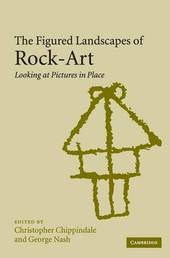
|
The Figured Landscapes of Rock-Art: Looking at Pictures in Place
Hardback
Main Details
| Title |
The Figured Landscapes of Rock-Art: Looking at Pictures in Place
|
| Authors and Contributors |
Edited by Christopher Chippindale
|
|
Edited by George Nash
|
| Physical Properties |
| Format:Hardback | | Pages:422 | | Dimensions(mm): Height 244,Width 170 |
|
| Category/Genre | Art of indigenous peoples
Pre-history
Prehistoric archaeology |
|---|
| ISBN/Barcode |
9780521818797
|
| Classifications | Dewey:709.0113 |
|---|
| Audience | | Professional & Vocational | | General | |
|---|
| Illustrations |
25 Tables, unspecified; 18 Maps; 142 Halftones, unspecified; 50 Line drawings, unspecified
|
|
Publishing Details |
| Publisher |
Cambridge University Press
|
| Imprint |
Cambridge University Press
|
| Publication Date |
1 April 2004 |
| Publication Country |
United Kingdom
|
Description
A companion to The Archaeology of Rock-Art (Cambridge 1998), this new collection edited by Christopher Chippindale and George Nash addresses the most important component around the rock-art panel - its landscape. The Figured Landscapes of Rock-Art draws together the work of many well-known scholars from key regions of the world for rock-art and for rock-art research. It provides a unique, broad and varied insight into the arrangement, location, and structure of rock-art and its place within the landscapes of ancient worlds as ancient people experienced them. Packed with illustrations, as befits a book about images, The Figured Landscapes of Rock-Art offers a visual as well as a literary key to the understanding of this most lovely and alluring of archaeological traces.
Author Biography
CHRISTOPHER CHIPPINDALE is Curator for archaeology collections and Reader in Archaeology at the Cambridge University Museum of Archaeology & Anthropology. GEORGE NASH is Part-time Lecturer at the Centre for the Historic Environment, Department of Archaeology, University of Bristol.
Reviews'... A most successful enterprise, largely because the range and quality of contributors is so consistently high. ...it has much of use and interest to say about rock art and settings in which it occurs, and gives both useful correctives to naive assumptions of uniformity, and interesting new applications of methods of landscape analysis to rock art studies.' Landscape History
|